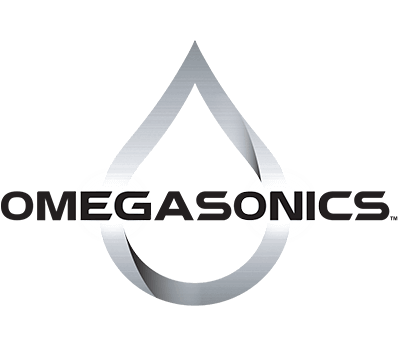Which Ultrasonic Transducer Type is Best for my Application?
Since the creation of ultrasonic cleaning technology, only two types of transducers have been used to generate the sound waves necessary for the cleaning process: piezoelectric and magnetostrictive.
While they both function well enough to have their place in the market, each ultrasonic transducer type has pros and cons that make them better suited for specific tasks.
To compare them, one must look at how they both operate and the strengths and weaknesses of each.
How does each Ultrasonic Transducer Work?
Piezoelectric technology uses crystals with special electrical properties that are made from lead zirconate titanate. In a transducer, this crystal material has two electrical wires attached to it on opposite faces. The crystal and wiring are then assembled in a housing between two metal plates.
As an electric current runs through the wiring and into the crystal, the crystal rapidly changes shape and expands. When the current terminates, the crystal goes back to its original shape. Ultrasonic transducers using this technology rapidly cycle the current through the crystal at a set frequency to create a resonating effect.
Magnetostrictive ultrasonic transducers operate on the principal that iron-rich metals expand and contract when subjected to a magnetic field. To take advantage of this behavior, an iron-rich metal core is wrapped in copper wiring. This assembly is then contained in a canister.
As electricity runs through the copper wire, the metal core expands and lengthens. Like piezoelectric transducers, a current at a set frequency will produce a resonating effect.
Method of Attachment
Piezoelectric ultrasonic transducers are glued to the ultrasonic cleaner housing using an adhesive. When piezoelectric technology was first introduced, this created issues because the adhesive would weaken and eventually fail. Thanks to engineering advances developed for use in the aircraft industry, this limitation no longer exists. Modern adhesives do not allow the transducer to attach despite repeated use.
Magnetostrictive transducers’ housings are welded directly to the ultrasonic cleaner tank, providing a strong, nearly unbreakable bond.
The winner? A tie
Ultrasonic Transducer Frequency
Ultrasonic cleaning operates ideally at frequency of 40kHz-70kHz, but the process can still take place in as wide a range as 25kHz-170kHz.
A magnetostrictive ultrasonic transducer can only operate up to a frequency of 30kHz, meaning its applicable uses are extremely limited. The best use for a magnetostrictive transducer ultrasonic cleaning system in this case is with large machinery that has difficult-to-remove contaminants. The process must also not require complete cleaning of the machinery. An example of where this application would be useful is on a machined plating line.
Piezoelectric ultrasonic transducers, on the other hand, are capable of operating at the full range of 25kHz-170kHz, giving them an extremely diverse variety of uses.
The winner? Piezoelectric
Energy Consumption
Magnetostrictive ultrasonic transducers must convert electrical energy into magnetic energy, and then use that to create mechanical energy. This entire process creates a lot of wasted energy, usually in the form of heat.
A piezoelectric ultrasonic transducer is capable of transforming a low voltage electrical current into mechanical energy in one step, making it highly efficient. Thus piezoelectric transducers can perform much more work given the same amount of electrical power consumed.
The winner? Piezoelectric
Inherent Ultrasonic Transducer Noise Level
When a harmonic frequency is generated, a subharmonic frequency typically results as a natural product. Most piezoelectric transducers operate at a level of 40kHz or above, meaning the first subharmonic produced is at 20kHz, beyond the range of normal human hearing.
A magnetostrictive ultrasonic transducer usually operates at a frequency of 30kHz or less, producing audible subharmonic frequencies. These frequencies sound identical to the hum of a high-tension electrical or transformer heard up close. When multiple magnetostrictive transducers are mounted into the same ultrasonic cleaning tank, the noise level requires the use of protective hearing gear.
The winner? Piezoelectric
Ultrasonic Transducer Life Expectancy
Piezoelectric transducers first used quartz crystal, which would eventually lose strength over time. Engineers have since created semiconductor ceramic materials that are pre-aged in a special process, reducing the amount of wear once the components where assembled.
Coupled with the newer crystal compounds, they now last as long as magnetostrictive transducers, which have always enjoyed a long lifespan.
The winner? A tie.
The Overall Winner?
While magnetostrictive technology has ideal uses for certain mechanical processes, a piezoelectric ultrasonic transducer has been shown, in general, to have better capabilities and desirable qualities.

